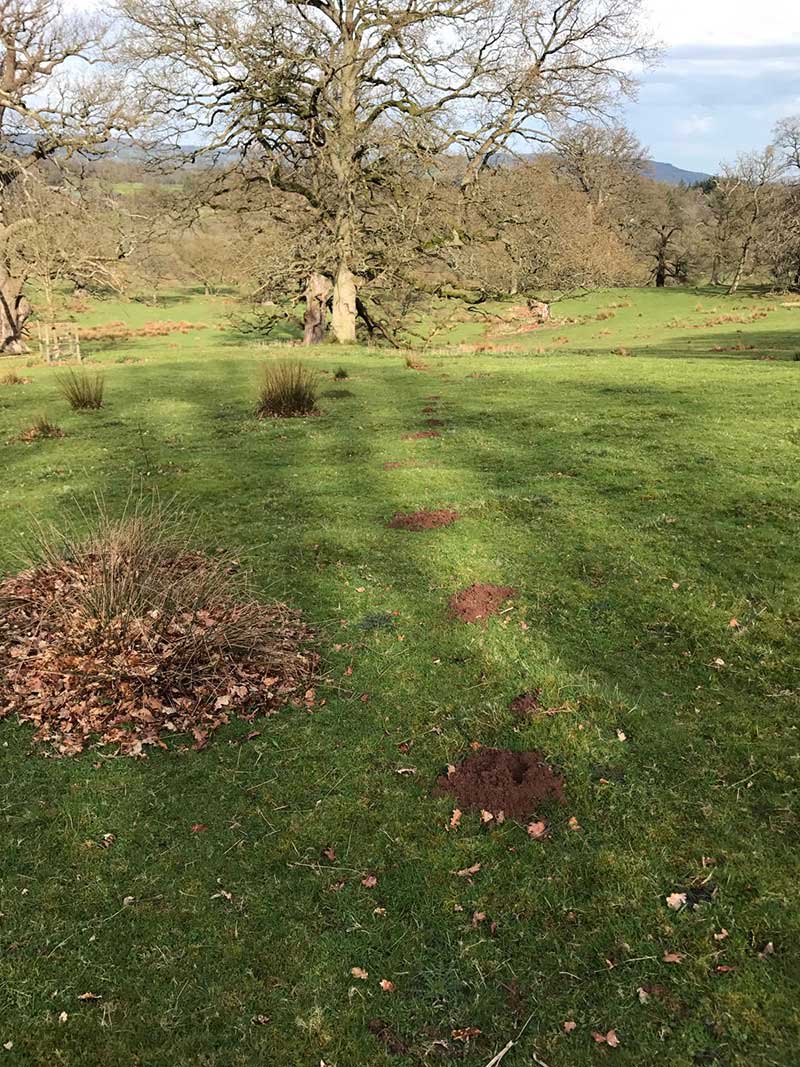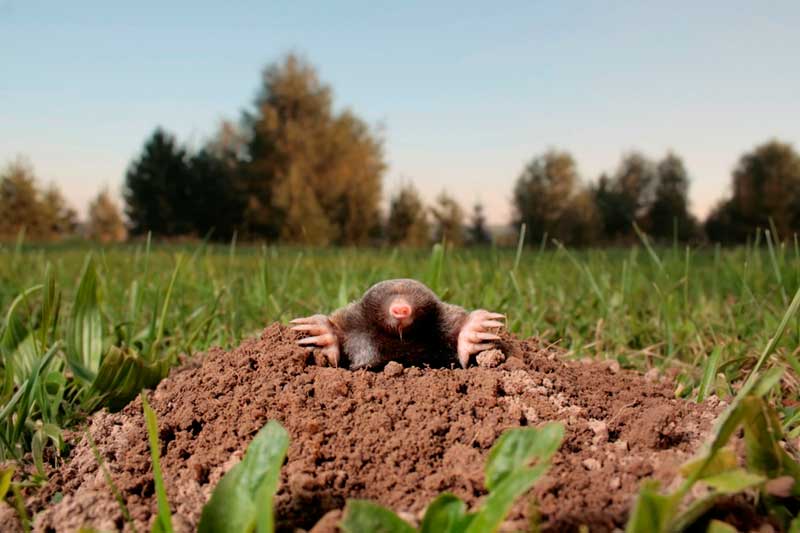Moles are known for one thing: molehills. But dig a little deeper and the extraordinary life of moles becomes apparent.
Born to dig
The European mole (Talpa europaea) is an insectivore, akin to hedgehogs and shrews, and lives an almost entirely subterranean existence. They are superbly adapted to a digging lifestyle, with broad, shovel-like forelimbs capable of excavating ten kilogrammes of soil in twenty minutes, a hundred times their body weight, and, in the UK, their efforts are visible almost wherever the earth is deep enough to dig.

In shallow soil the burrows are largely on one level, but elsewhere, the elaborate tunnel system may be multi-tiered, running from just below the surface to about a metre down, and covering up to half an acre (2000 square metres). Surface tunnels in soft or freshly cultivated earth are often temporary, exploratory excursions that push up ridges in the soil, particularly during the breeding season in spring. Sometimes, the raised roof of a surface run collapses, leaving an open trench.
It is the excavated soil from deeper, more permanent tunnels that is pushed up to form molehills. The burrow system acts as a pit-fall trap, collecting invertebrates, such as earthworms and insect larvae, which are caught by its patrolling resident before they can escape. Their hearing and sense of smell ae not particularly acute, but the latter seems to be important in finding food at short distances.
Changing with the seasons
Counting molehills though is not a good indication of the number of moles at a site. It’s been suggested that the amount of digging is influenced by the availability of prey: when prey is plentiful, moles may be inconspicuous as the existing tunnel system provides enough food; when it is scarce, or in cold weather when earthworms descend to more temperate depths, the network of tunnels is extended, turning up fresh molehills. However, evidence from at least one study of grassland shows that reducing earthworm numbers (by mowing or grazing, for example) gives rise to fewer molehills. It is clear though that there is a seasonal effect, with more molehills appearing in spring and autumn than at other times.
A bad rap
In gardens, lawns tend to show the brunt of moles’ handiwork, but their reputation as pests isn’t wholly deserved. In most cases, molehills don’t justify the measures used to control them. Kill-traps—such as ‘scissor’ or ‘half-tunnel’ (Duffus) traps—aren’t always humane. Deterrents, from the high-tech to the plain bizarre, have mixed success, and none backed by any evidence.

Sonic devices, which create vibrations through the soil, and their low-tech counterparts (toy windmills, half-sunken plastic bottles or children) have their supporters and detractors in various measure. Putting the contributions of a pet dog or cat in mole runs probably has fewer fans—the idea is that the smell of a large predator acts as a deterrent. Claims have been made for alliums and plants such as Stinking hellebore (Hellesborus foetidus), Crown imperial (Fritillaria imperialis) and Castor oil plant (Ricinus communis) as repellents, but not over-watering, so that earthworms aren’t brought to the surface, may be just as good.
Doing good
For most people though, molehills aren’t a big problem: soil heaps can be cleared away, avoiding an invasion of weeds, and damage to growing plants is only temporary. The best policy is to put them to good use. Most of the soil pushed up comes from beneath the seed bank (the top few inches of soil that contains dormant weed seeds) and after the birds have been at it, it is largely free of insect larvae. The textured soil is excellent for potting plants.
Moles will feed on troublesome species, too, such as leatherjackets (crane fly larvae), chafer larvae and wireworm (click beetle larvae), which can damage lawns. Their tunnels help to aerate the soil and, to a lesser extent, act as drainage channels.
The inconvenience of a few molehills is a chance to see one of our least known and most extraordinary mammals.
Many of Britain’s mammals are under threat, but by recording sightings of these species you can help protect their future. Take part in our survey Living with Mammals this autumn.
